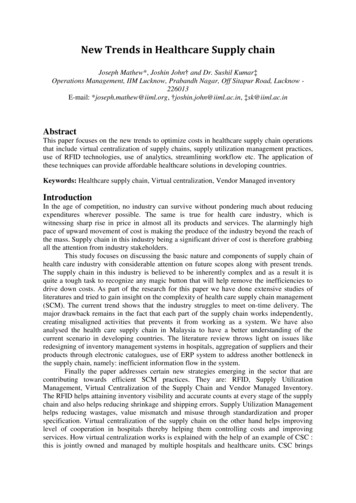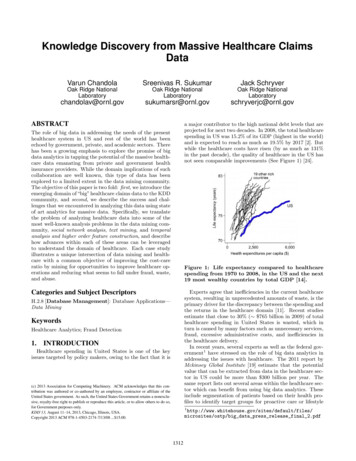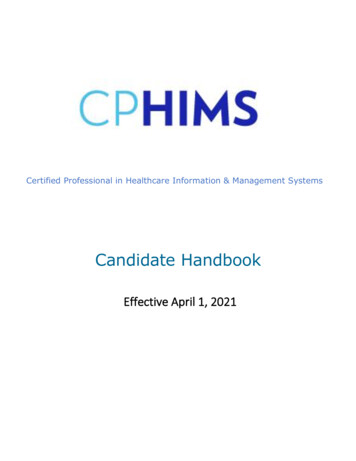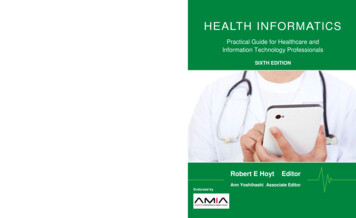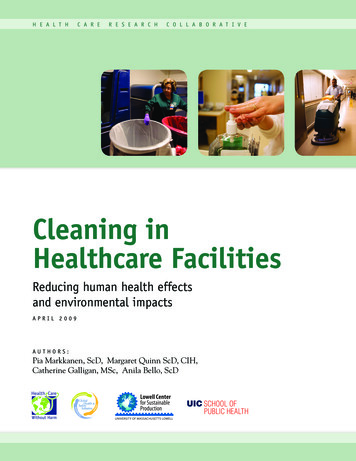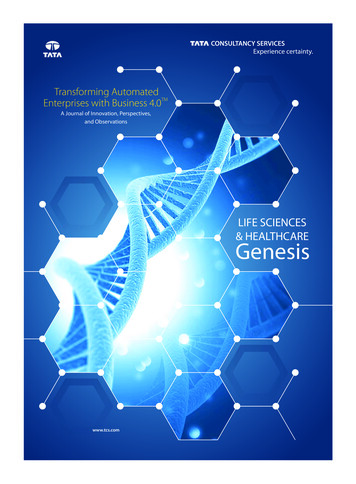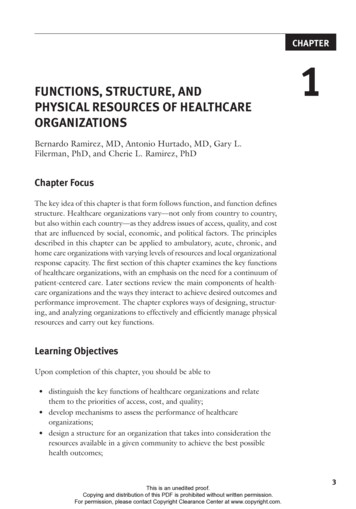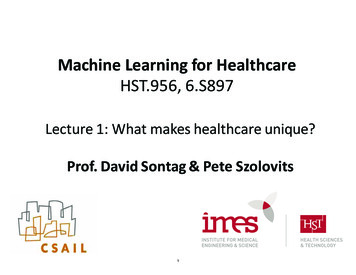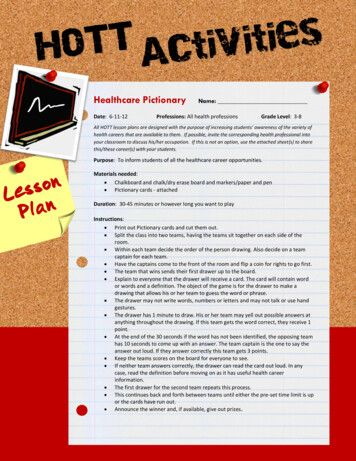
Transcription
Healthcare PictionaryDate: 6-11-12Name:Professions: All health professionsGrade Level: 3-8All HOTT lesson plans are designed with the purpose of increasing students’ awareness of the variety ofhealth careers that are available to them. If possible, invite the corresponding health professional intoyour classroom to discuss his/her occupation. If this is not an option, use the attached sheet(s) to sharethis/these career(s) with your students.Purpose: To inform students of all the healthcare career opportunities.Materials needed: Chalkboard and chalk/dry erase board and markers/paper and pen Pictionary cards - attachedDuration: 30-45 minutes or however long you want to playInstructions: Print out Pictionary cards and cut them out. Split the class into two teams, having the teams sit together on each side of theroom. Within each team decide the order of the person drawing. Also decide on a teamcaptain for each team. Have the captains come to the front of the room and flip a coin for rights to go first. The team that wins sends their first drawer up to the board. Explain to everyone that the drawer will receive a card. The card will contain wordor words and a definition. The object of the game is for the drawer to make adrawing that allows his or her team to guess the word or phrase. The drawer may not write words, numbers or letters and may not talk or use handgestures. The drawer has 1 minute to draw. His or her team may yell out possible answers atanything throughout the drawing. If this team gets the word correct, they receive 1point. At the end of the 30 seconds if the word has not been identified, the opposing teamhas 10 seconds to come up with an answer. The team captain is the one to say theanswer out loud. If they answer correctly this team gets 3 points. Keep the teams scores on the board for everyone to see. If neither team answers correctly, the drawer can read the card out loud. In anycase, read the definition before moving on as it has useful health careerinformation. The first drawer for the second team repeats this process. This continues back and forth between teams until either the pre-set time limit is upor the cards have run out. Announce the winner and, if available, give out prizes.1
StethoscopeThermometerA tool that makes the heartbeat soundA tool that a nurse uses to measurelouder. A nurse listens to your heart toyour body temperature. Normal bodymake sure it’s healthy.temperature is 98.6 degreesFahrenheit.X-RaySpineA radiologist is a doctor who studiesCommonly known as your backbone.the inside of your body. They can lookChiropractors adjust a patient’s spineat an x-ray and find breaks in bones.by applying pressure with their hands.ScalpelEye ChartA small, sharp blade used in surgery.A tool used by optometrists to checkSurgeons use many differenttheir patient’s vision. Optometristsinstruments to aid in surgeries.may prescribe glasses and/or contactsto help you see better.MicroscopeNurseA tool used by laboratory techniciansA nurse cares for people who are sickto magnify samples of blood, urine,or injured. They assess people in theand cells.hospital and perform medicaltreatments.ToothbrushBlood Pressure CuffDentists recommend that theirA tool used by nurses to take theirpatients use a toothbrush to brushpatient’s blood pressure.their teeth twice a day.
WheelchairTest TubeA chair with wheels used to increase mobilityof sick, injured, or disabled persons. A nurseassistant often uses a wheelchair to transportpatients from one area of the hospital toA tube used by laboratory techniciansto hold and store blood or other bodyanother.fluids for testing.AmbulanceContact LensesA vehicle a paramedic/EMT uses toOptometrists prescribe contact lenses,transport sick or injured people to thewhich are a soft lens that is placed onhospital.the eye, to help patients see better.MuscleBloodTissues in the body that allowA body fluid that supplies the bodymovement. Physical therapists work towith oxygen and other nutrients.strengthen patients’ muscles after anPhlebotomists are trained to drawinjury.blood for testing.HospitalNeedleA facility where healthcare treatment isA pointed tool used to injectprovided by specialized staff and equipment.Health unit coordinators provide supportservices to patients, visitors and hospitalsubstances such as medication intothe body. A licensed practical nursemanagement.often gives injections.LungFlossAn organ in the body that is essentialPlastic string used to remove food andfor breathing. Respiratory therapistsdental plaque from teeth. Dentistsevaluate, treat and care for patientsrecommend flossing once a day.with breathing disorders.
DentistFood PyramidDentists treat and correct teeth andDieticians use a food pyramid to showmouth problems. They may need topatients the different food groups andpull teeth, fill cavities, and performwhat food they should be eating.surgery.CastRibsA material hardened around a brokenPart of the skeleton that protects thebone to immobilize part of the body.lungs, heart and other internal organs.An orthopedist puts a cast on a child’sA cardiologist is a doctor that treatsbroken arm so it can heal.problems of the heart.StretchMilkAthletic trainers prevent injuries byA dairy product that’s a good sourceteaching athletes to stretch properlyof calcium. Dietitians work with clientsbefore physical activity.to create healthy diets.StitchesPupilA thread-like device used by surgeonsThe black part of the eye that allowsto sew up internal organs and skinlight to enter. Optometrists examineafter an injury or surgery.patient’s eyes to diagnose visionproblems.StretcherPrescriptionA device used to carry people fromInstructions that a doctor writes for aone place to another. EMTs use apharmacist regarding the type ofstretcher to carry injured people to themedication and the dosage the patientambulance and then into the hospital.needs.
to sew up internal organs and skin after an injury or surgery. Pupil The black part of the eye that allows light to enter. Optometrists examine patient’s eyes to diagnose vision problems. Stretcher A device used to carry people from one place to another. EMTs use a stretcher to carry in


